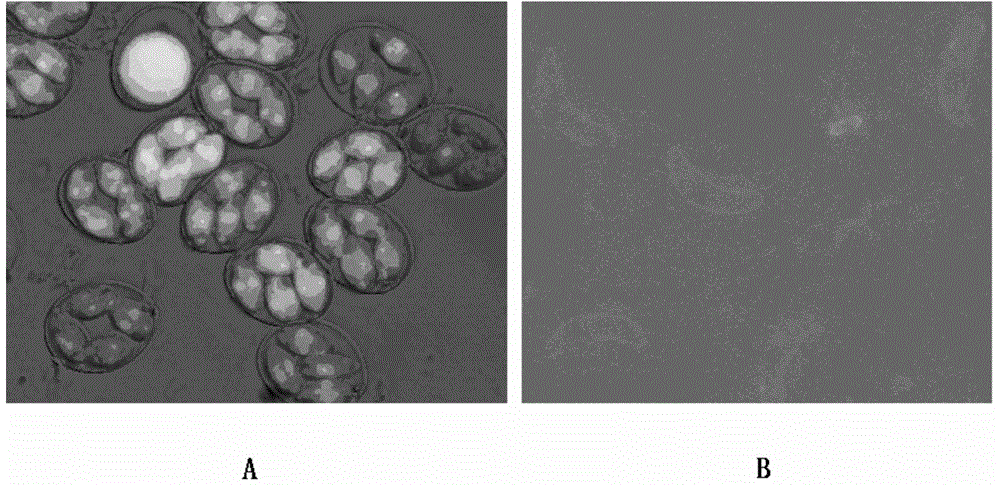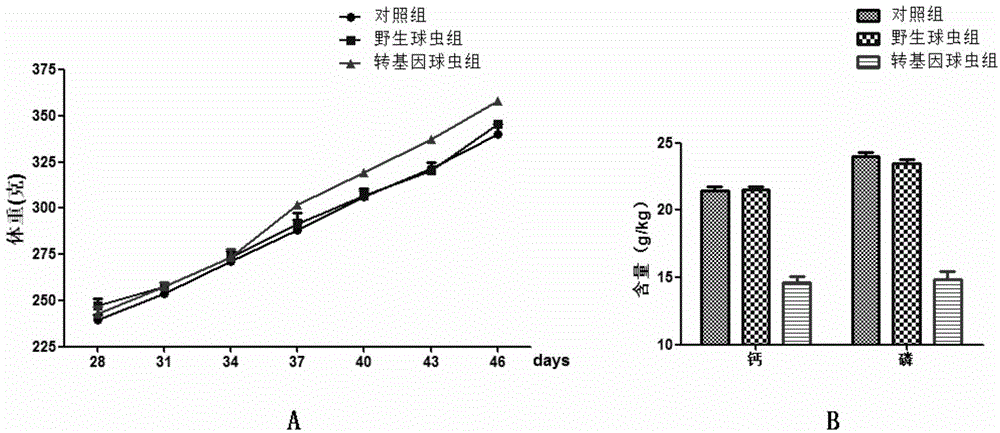Method for improving calcium and phosphorus utilization ratio of livestock and poultry
A utilization rate, calcium and phosphorus technology, applied in the biological field, can solve the problems of application and promotion limitation, high temperature resistance, high cost of phytase, and achieve the effects of broad application prospects, low cost and simple use.
- Summary
- Abstract
- Description
- Claims
- Application Information
AI Technical Summary
Problems solved by technology
Method used
Image
Examples
Embodiment 1
[0027] 1. Carrier construction
[0028] Use conventional PCR technology to amplify the phytase full-length gene of Escherichia coli (its nucleotide sequence is shown in SEQ ID No.1) and add AgeI and SacII restriction site sequences at both ends respectively, and the sequence is correct The PCR product was digested with restriction endonucleases AgeI and SacII, and connected to the AgeI and SacII restriction vector pMDEAAssA (constructed by the inventor's laboratory based on the pBR322 vector, containing the mic2 promoter of Eimeria tenella, Drug screening gene DHFR-TS3m, reporter gene yellow fluorescent protein EYFP, actin promoter and 3' regulatory sequence of Eimeria tenella, signal peptide sequence of Toxoplasma gondii dense granule protein 8, its nucleotide sequence is shown in SEQ ID No.2), and then identify the positive clones obtained. The correctly identified recombinant plasmid was extracted to obtain the constructed coccidian transfection vector pMDEA-phytase (its n...
Embodiment 2
[0039] In steps 2 and 3 of Example 1, we compared the relationship between the number of serial passages and obtaining the transgenic coccidia stably expressing phytase. After the coccidial oocysts of each generation are collected, they are purified and sporulated, and their luminous efficiency is detected under a fluorescent microscope. The calculation formula is: luminous rate = sporulated oocysts expressed by yellow fluorescent protein / all sporulated oocysts ×100%. We found that the luminous efficiencies of the 4th and 5th generations were 54% and 83% respectively, and when the drug pressure screened to the 6th generation, 100% of the transgenic coccidia expressing the yellow fluorescent reporter protein could be obtained, and the subsequent serial passages (7- 9 passages) still expressed 100% fluorescent protein (see image 3 ). Through the identification of step 3 in Example 1, it was confirmed that continuous drug pressure passage for 6 generations is the optimal con...
Embodiment 3
[0041] In a transgenic coccidian comparison test, we compared the calcium and phosphorus utilization effects of the commercialized recombinant phytase and the transgenic coccidia obtained by applying the present invention.
[0042]The 1-day-old AA broiler chickens were randomly divided into blank control group, phytase addition group and transgenic coccidia use group (10 chickens in each group). The feed is full-price pellet feed without phytase (entrusted to Beijing Huadu Feed Co., Ltd. for small-scale production). In the phytase addition group, phytase 5000 (produced by Su Kehan Bioengineering Co., Ltd.) was added to the feed throughout the whole process, and the addition amount was 600g / kg. The chickens of the transgenic coccidia group were orally inoculated with the transgenic Eimeria mellifera expressing phytase at the age of 1 day, and the inoculation dose per chicken was 5×10 3 Sporulated oocysts. Determination of calcium and phosphorus content in feces during the p...
PUM
 Login to View More
Login to View More Abstract
Description
Claims
Application Information
 Login to View More
Login to View More - R&D
- Intellectual Property
- Life Sciences
- Materials
- Tech Scout
- Unparalleled Data Quality
- Higher Quality Content
- 60% Fewer Hallucinations
Browse by: Latest US Patents, China's latest patents, Technical Efficacy Thesaurus, Application Domain, Technology Topic, Popular Technical Reports.
© 2025 PatSnap. All rights reserved.Legal|Privacy policy|Modern Slavery Act Transparency Statement|Sitemap|About US| Contact US: help@patsnap.com



